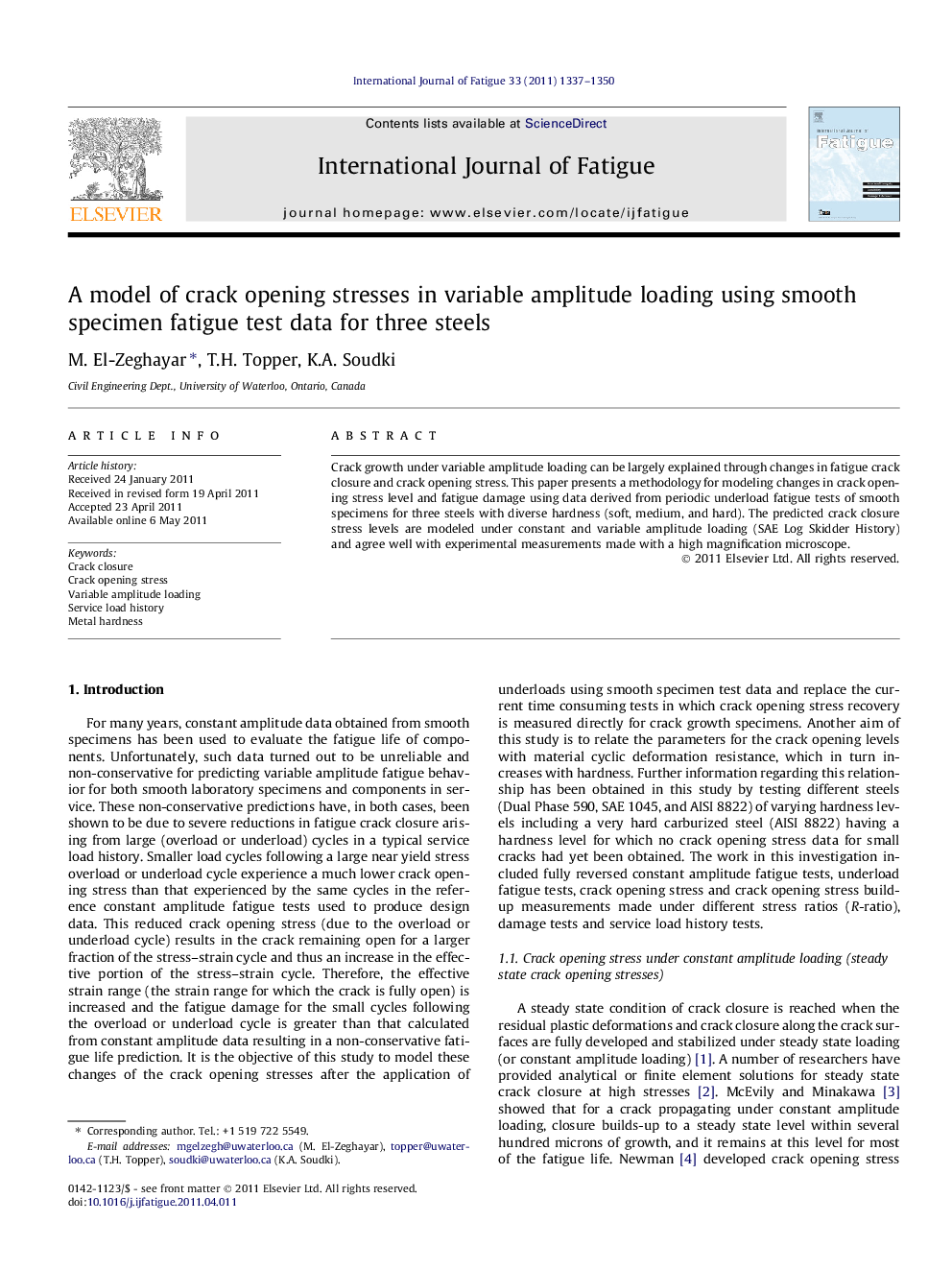| Article ID | Journal | Published Year | Pages | File Type |
|---|---|---|---|---|
| 778425 | International Journal of Fatigue | 2011 | 14 Pages |
Crack growth under variable amplitude loading can be largely explained through changes in fatigue crack closure and crack opening stress. This paper presents a methodology for modeling changes in crack opening stress level and fatigue damage using data derived from periodic underload fatigue tests of smooth specimens for three steels with diverse hardness (soft, medium, and hard). The predicted crack closure stress levels are modeled under constant and variable amplitude loading (SAE Log Skidder History) and agree well with experimental measurements made with a high magnification microscope.
Graphical abstractThe rate of the recovery of the crack opening stress to its steady state level after the application of an underload is modeled by an exponential build-up formula, in which the increase in crack opening stress during each cycle is proportional to the difference between the current crack opening stress and the steady state crack opening stress for the given cycle.Figure optionsDownload full-size imageDownload as PowerPoint slideHighlights► It was found that the crack opening stress decreased immediately when the specimen was subjected to a large underload cycle that caused yielding of the material in the wake of the crack and a flattening of crack asperities. ► A new test procedure was introduced in this study to obtain data on the return of the crack opening stress to a steady state level following an underload. ► The tests proved to be time efficient and can replace the current tests in which crack opening stress recovery is measured directly for crack growth specimens using an optical or confocal scanning laser microscope.
